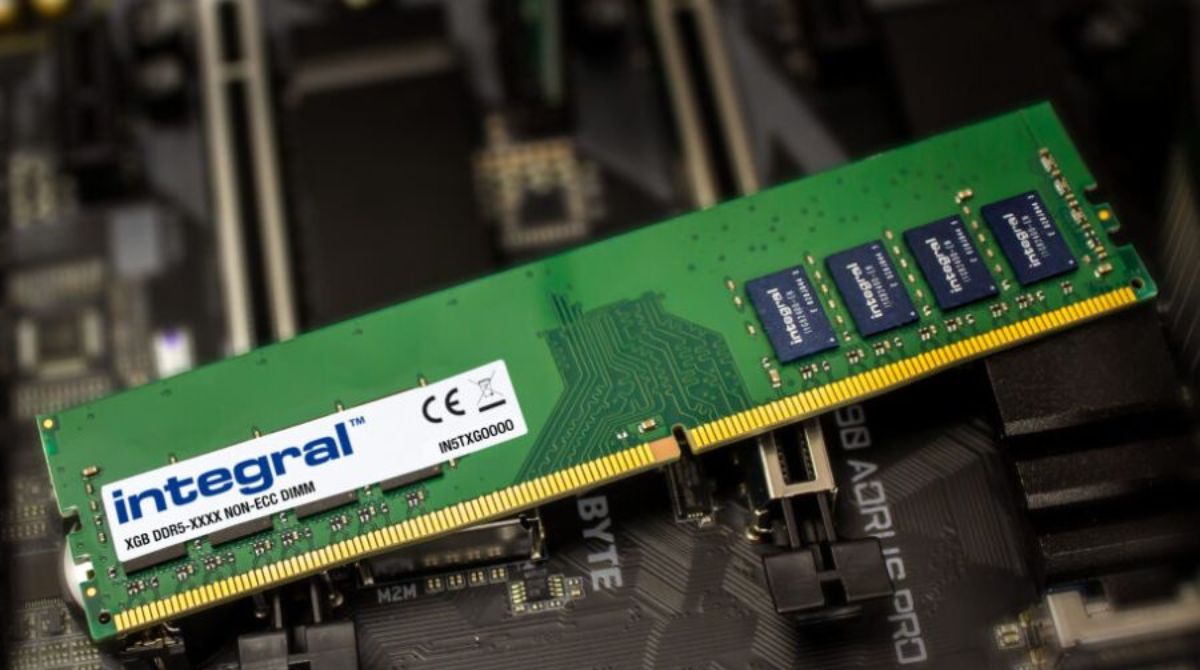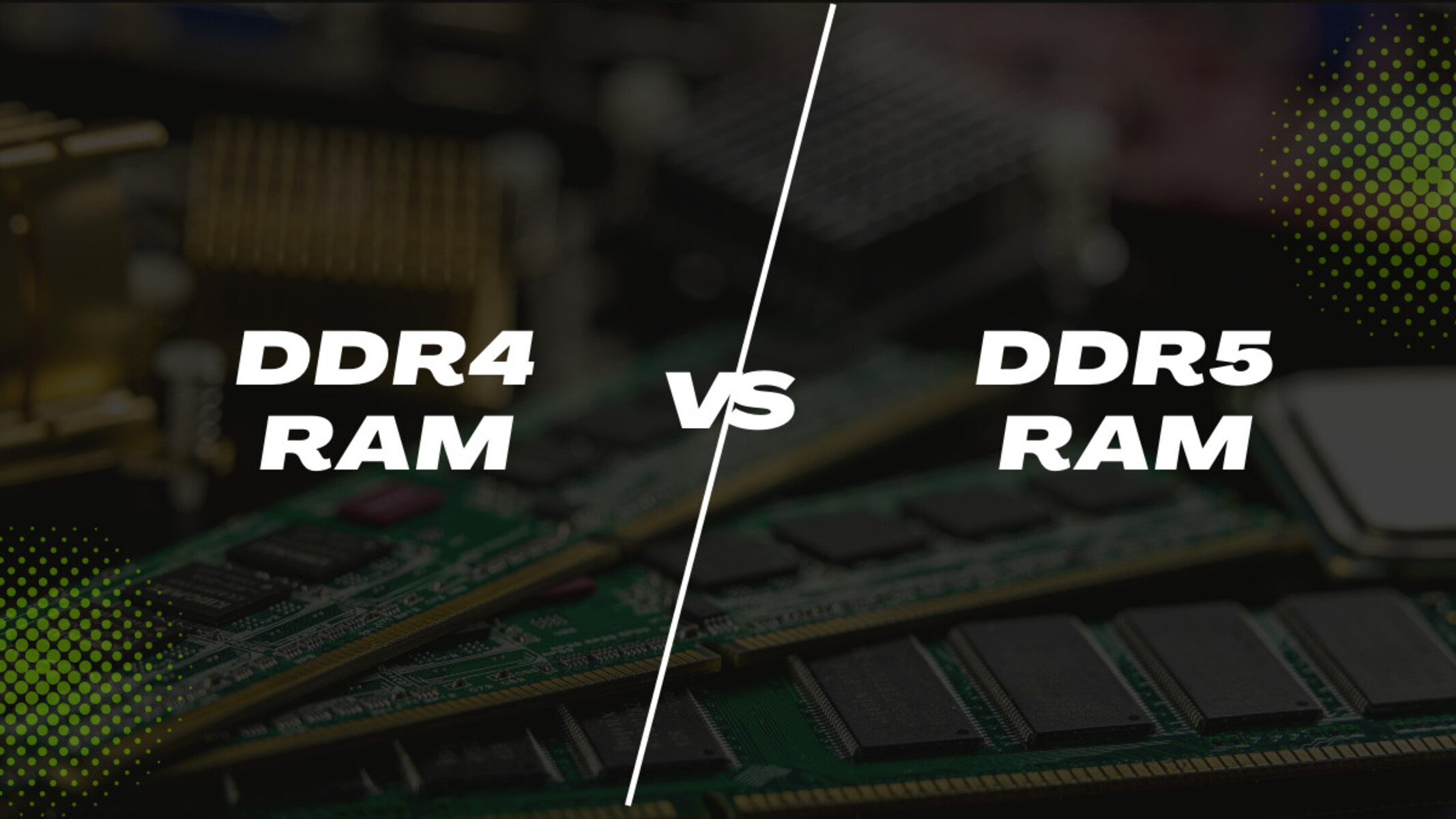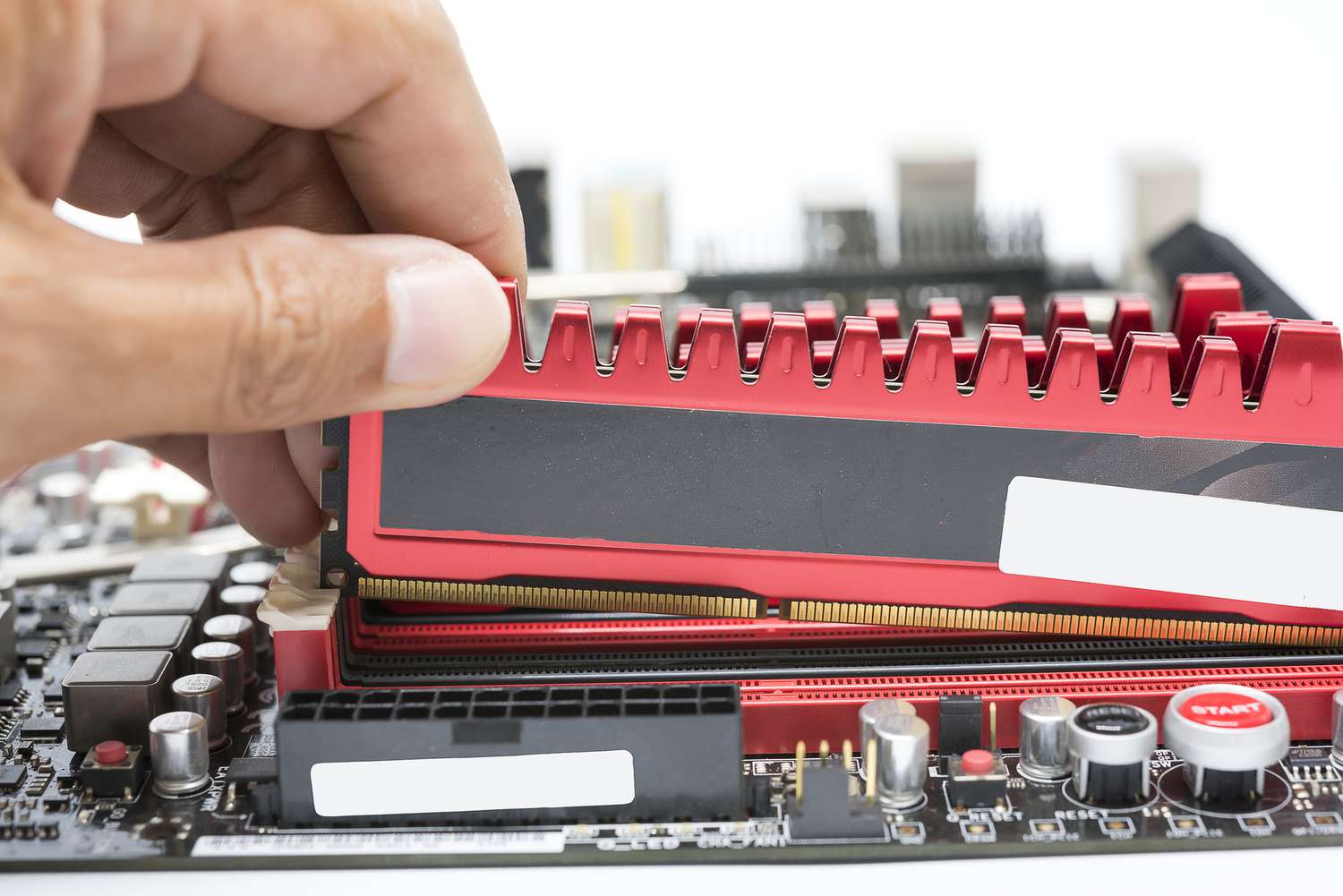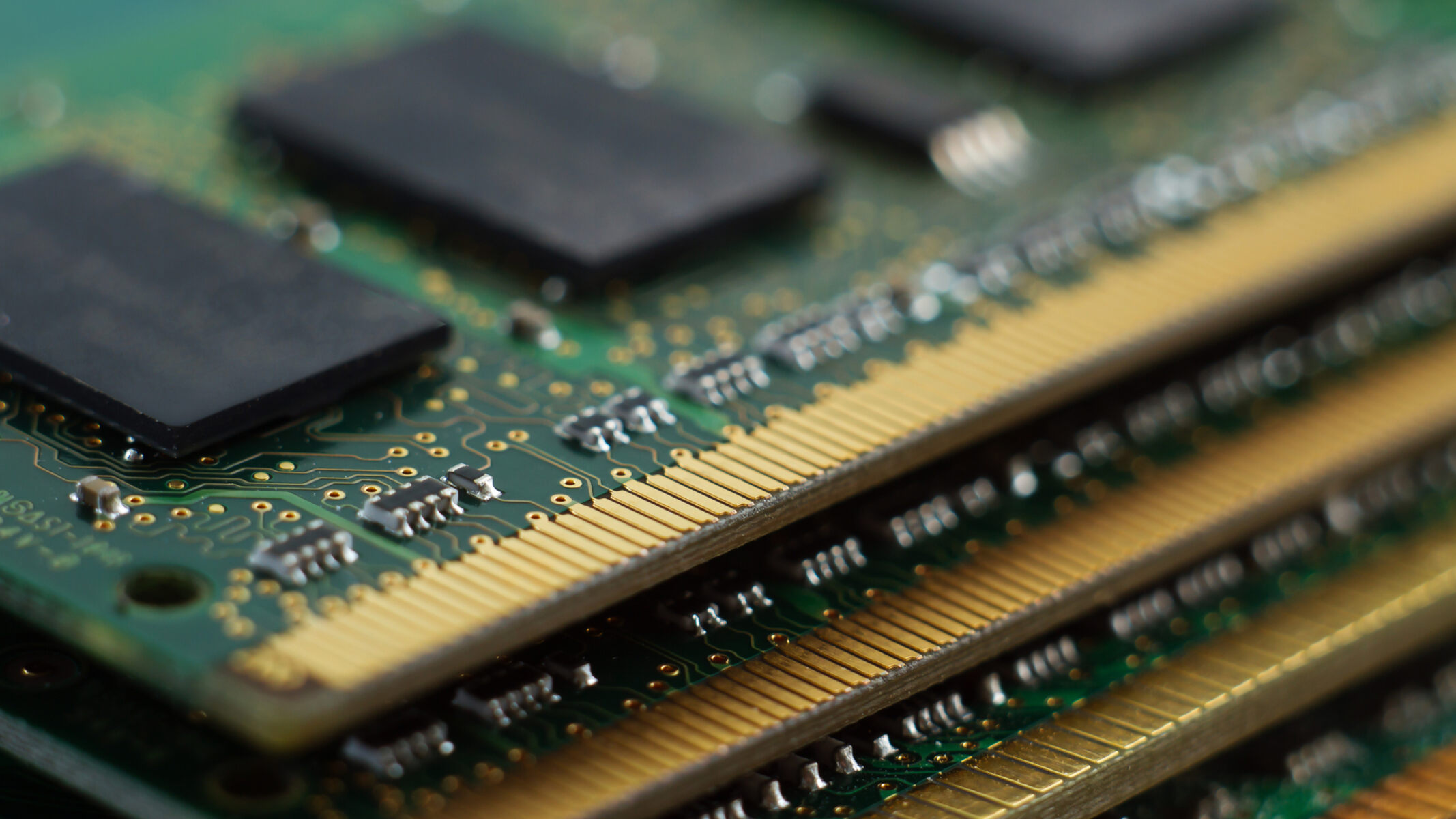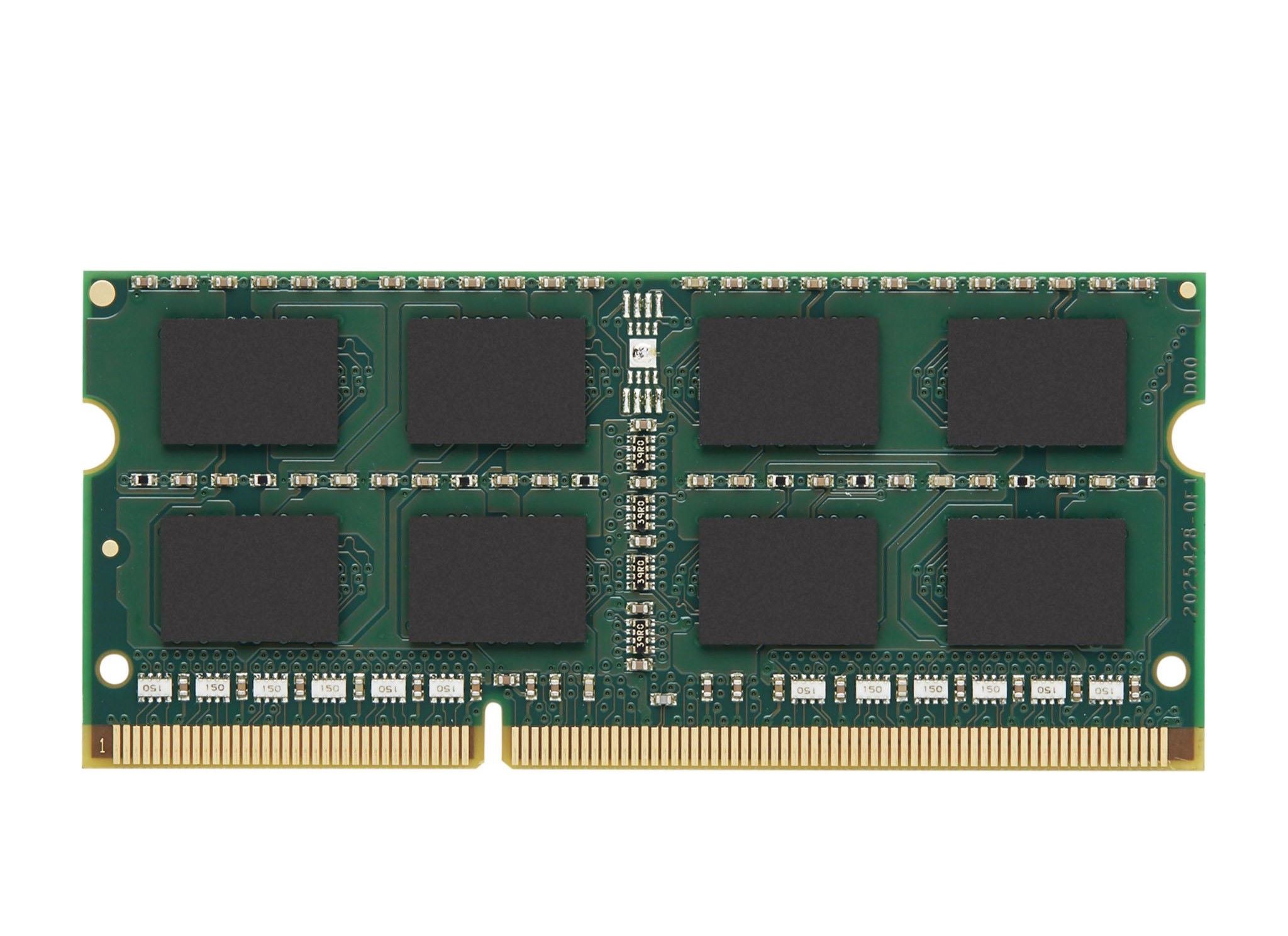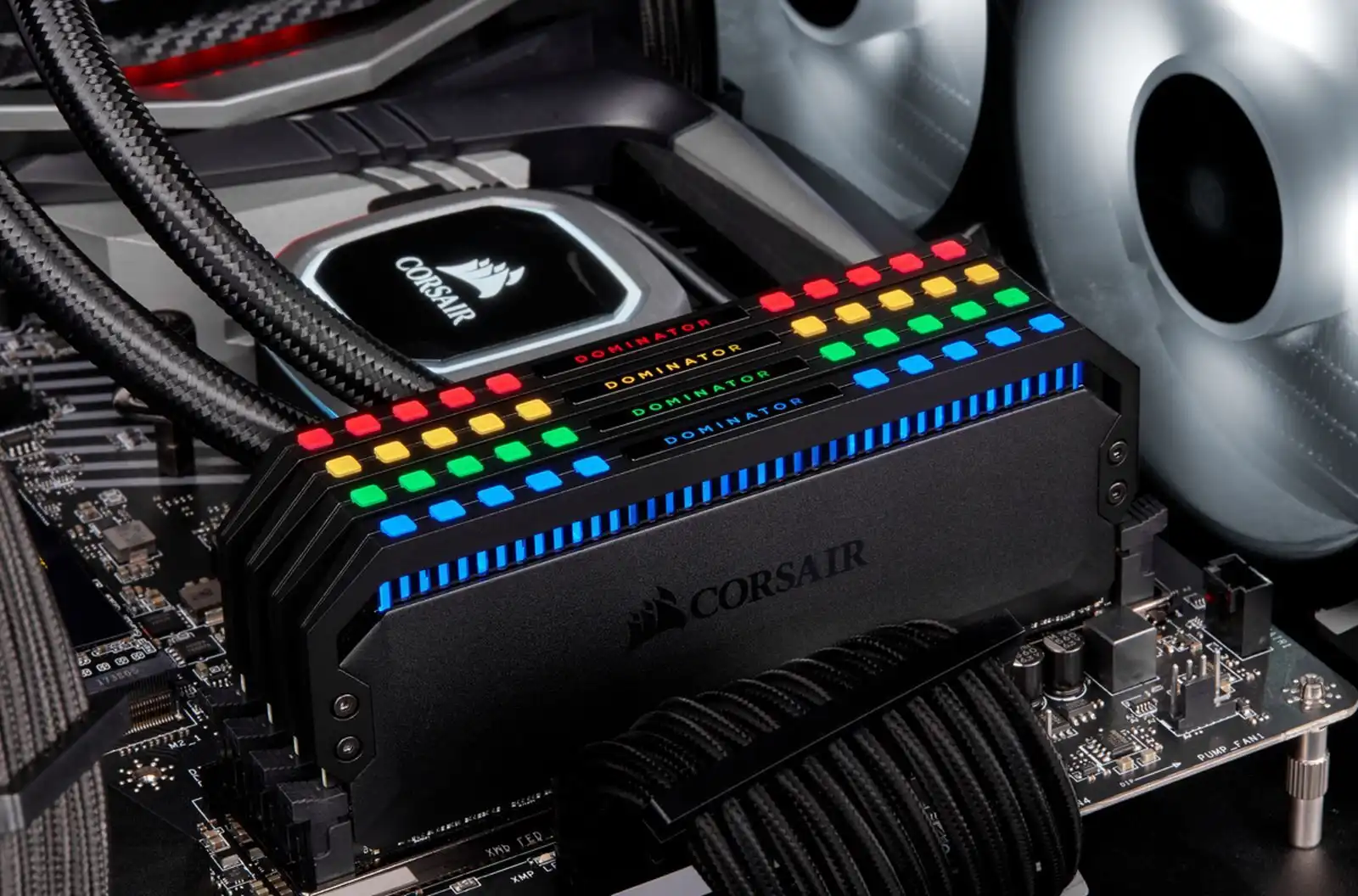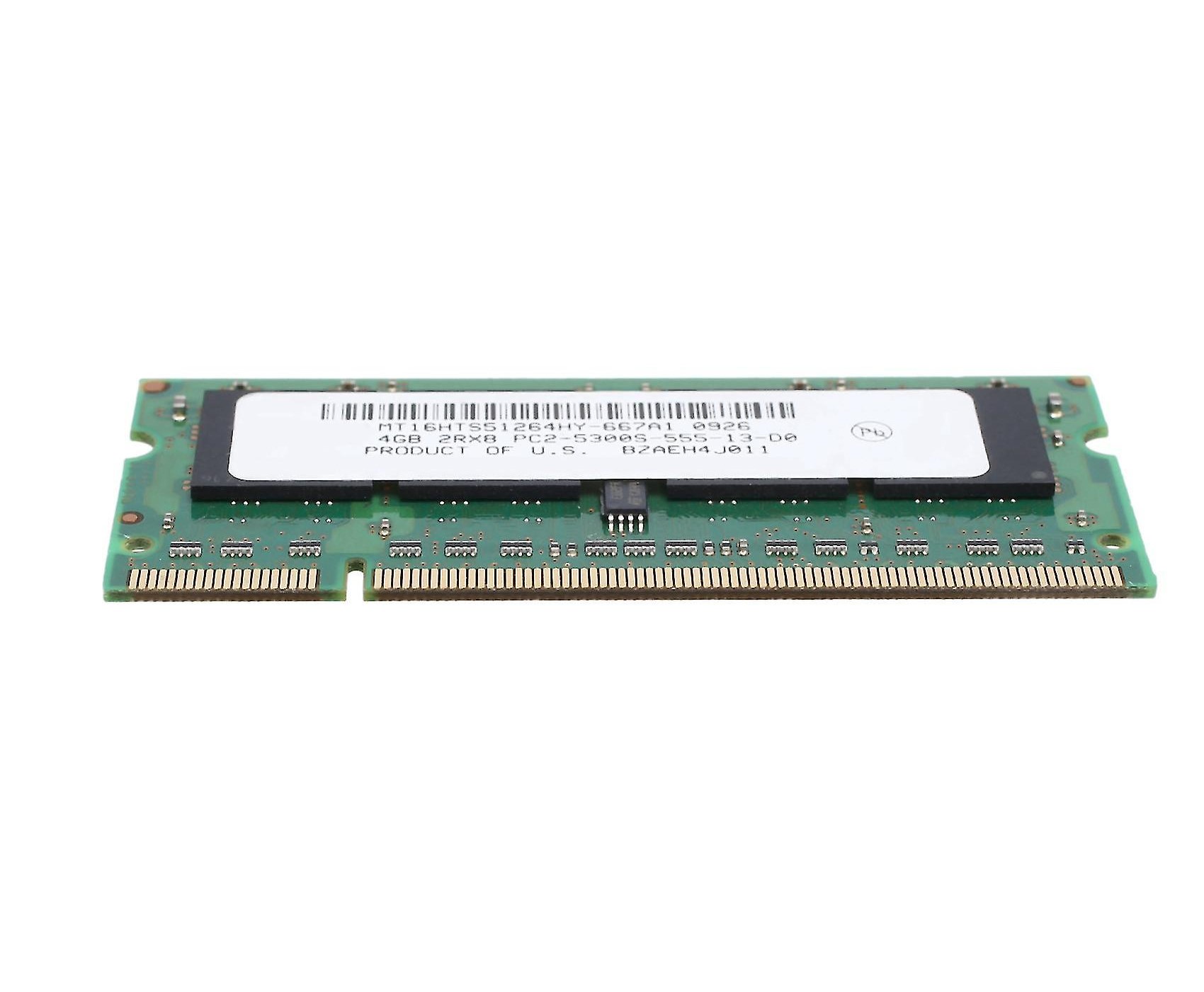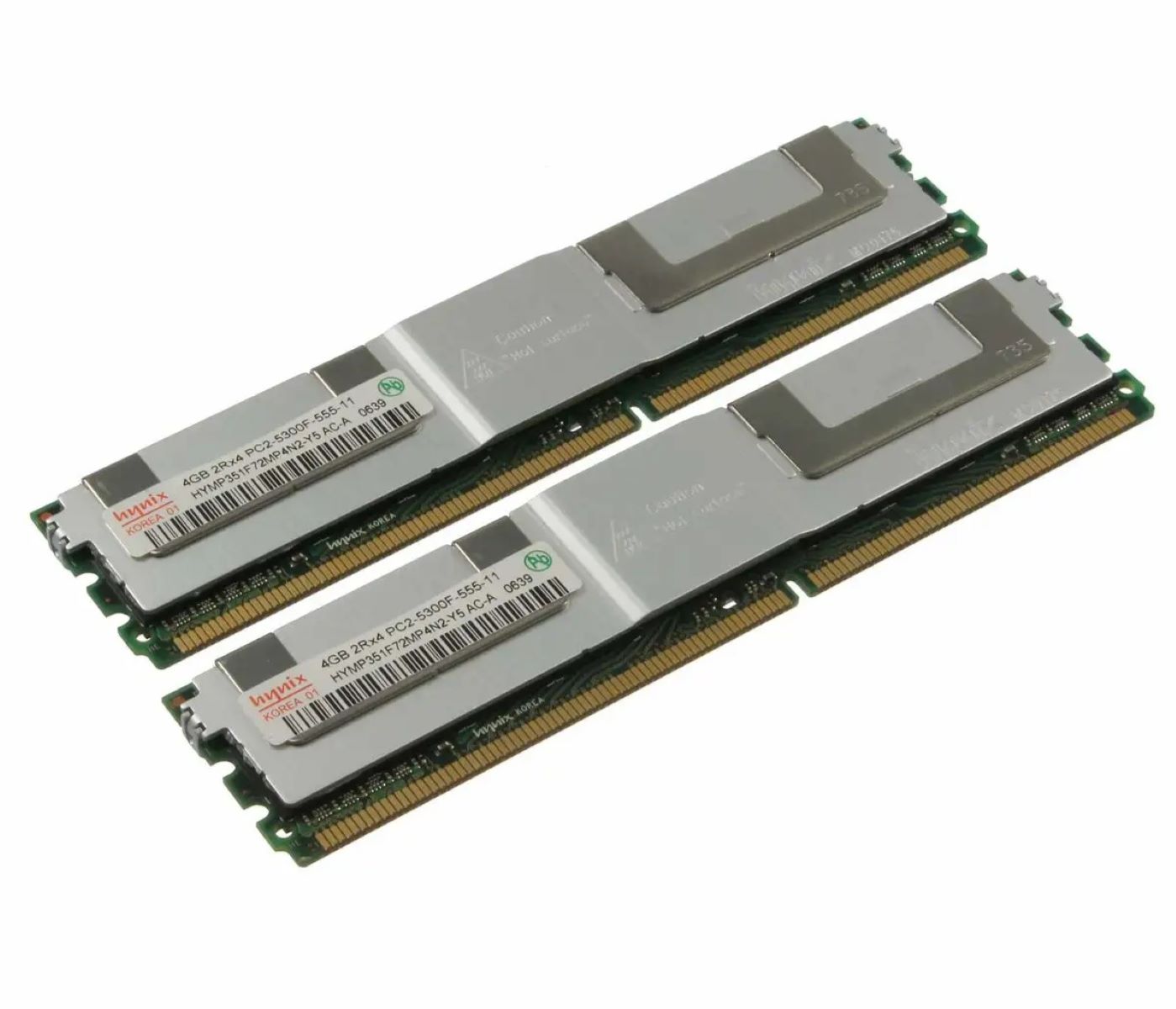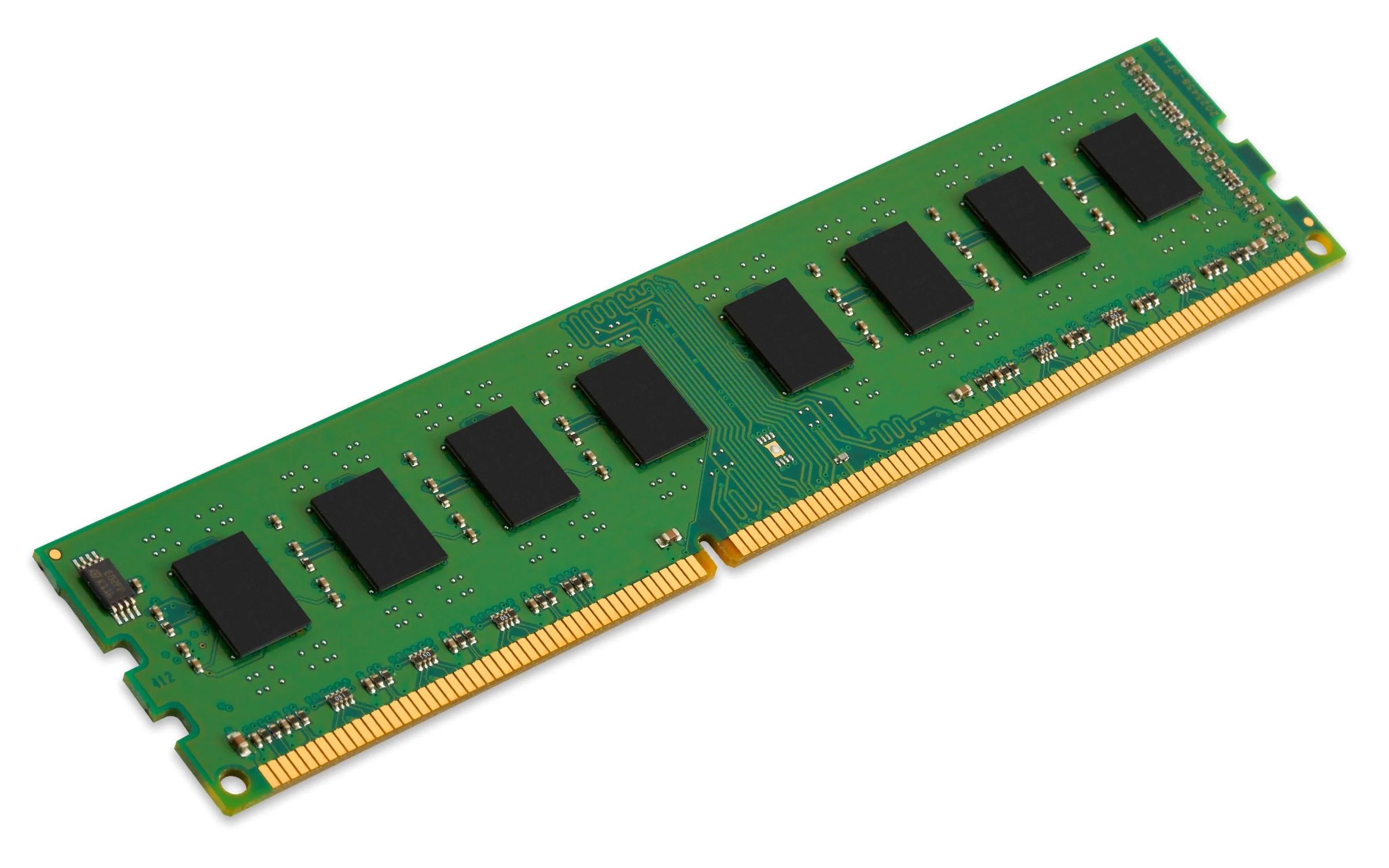Introduction
Welcome to the world of DDR RAM – an essential component of modern computer systems that plays a crucial role in ensuring smooth and efficient performance. Whether you’re a tech enthusiast or a casual computer user, understanding DDR RAM and its functions can greatly enhance your computer experience.
DDR RAM, which stands for Double Data Rate Random Access Memory, is a type of computer memory that stores and retrieves data quickly, making it an integral part of system operations. It acts as a temporary storage space for data that the computer processor needs to access frequently.
In this article, we will explore the fundamentals of DDR RAM, including its definition, how it works, its advantages, different types, and its comparison to other types of RAM. We will also delve into important factors to consider when choosing DDR RAM and clear up some common misconceptions associated with this technology.
Whether you’re a computer enthusiast looking to upgrade your system or a curious learner seeking to expand your knowledge, this article will serve as a comprehensive guide to understanding DDR RAM and its significance in the realm of computing.
Let’s dive into the world of DDR RAM and uncover its inner workings!
Definition of DDR RAM
DDR RAM, which stands for Double Data Rate Random Access Memory, is a type of computer memory that allows data to be stored and retrieved at a higher speed compared to its predecessor – the Single Data Rate (SDR) RAM.
The term “double data rate” signifies that DDR RAM has the ability to transfer data on both the rising and falling edges of the clock signal, effectively doubling the data transfer rate. This innovative design significantly improves the overall performance and efficiency of computer systems.
DDR RAM stores data in individual memory cells arranged in a grid-like structure. Each memory cell can store a single bit of information, represented by an electrical charge. These memory cells are organized into rows and columns, and the computer processor can access the data stored in these cells by specifying the appropriate row and column addresses.
One important feature of DDR RAM is its synchronous operation. This means that the speed of DDR RAM is synchronized with the system clock speed, ensuring efficient data transfer between the RAM and the computer processor. The system clock dictates the timing at which data is sent and received by the RAM, allowing for seamless communication and improved overall performance.
DDR RAM also has a self-refresh mechanism, which periodically refreshes the stored data to maintain its integrity. This ensures that the data remains intact even when the power supply to the RAM is interrupted.
Overall, DDR RAM is an essential component of modern computer systems, providing fast, reliable, and efficient data storage and retrieval capabilities. Its advanced design and synchronization with the system clock make it an integral part of enhancing computer performance and multitasking capabilities.
How DDR RAM Works
To understand how DDR RAM works, it’s important to grasp the concept of dual data rate transfer. Unlike its predecessor, Single Data Rate (SDR) RAM, which transfers data only on the rising edge of the clock signal, DDR RAM transfers data on both the rising and falling edges of the clock signal. This dual data rate transfer effectively doubles the data transfer rate of DDR RAM.
When the computer processor needs to read or write data from or to the DDR RAM, it sends a command to the memory controller. The memory controller then coordinates the transfer of data between the processor and the DDR RAM.
DDR RAM operates using a series of memory modules, each consisting of multiple memory chips. These memory modules are inserted into motherboard slots designated for RAM.
When data needs to be read from the DDR RAM, the memory controller sends a command to the specific memory module, specifying the address of the desired data. The memory module locates the data using the row and column addresses and sends it back to the memory controller during the appropriate clock cycles.
Similarly, when data needs to be written to the DDR RAM, the memory controller sends a write command along with the data to be stored. The memory module then stores the data in the specified memory location during the necessary clock cycles.
DDR RAM operates in synchronous mode, which means its speed is synchronized with the system clock speed. The system clock signals the start and end of each clock cycle, determining when data can be transferred to or from the DDR RAM. This synchronization ensures efficient communication between the RAM and the processor, preventing data transfer conflicts and improving overall system performance.
DDR RAM also incorporates burst mode, where multiple data transfers can occur consecutively without requiring additional commands from the memory controller. This further enhances the efficiency of data transfer and improves system responsiveness.
In summary, DDR RAM works by utilizing dual data rate transfer, synchronous operation with the system clock, and efficient coordination between the memory controller and the memory modules. This combination of features allows for fast and reliable data storage and retrieval, contributing to the overall performance and responsiveness of a computer system.
Advantages of DDR RAM
DDR RAM offers several advantages over its predecessors and other types of RAM, making it a popular choice for computer systems:
1. Increased data transfer rate: DDR RAM’s double data rate transfer allows for faster data transfer compared to single data rate RAM. This means that data can be read from and written to the RAM at a higher speed, resulting in improved overall system performance and responsiveness.
2. Efficient multitasking: The faster data transfer rate of DDR RAM enables smooth multitasking, allowing the computer to handle multiple programs and processes simultaneously without slowing down. This is particularly beneficial for tasks that require high memory bandwidth, such as gaming, graphic design, and video editing.
3. Enhanced system performance: By providing fast and efficient data storage and retrieval, DDR RAM greatly contributes to the overall performance of a computer system. It reduces latency, allowing the processor to access data quickly, resulting in faster application loading times and smoother overall system operation.
4. Compatibility: DDR RAM is compatible with a wide range of computer systems, making it easy to find and install in most modern motherboards. This compatibility ensures that DDR RAM can be easily upgraded or replaced without requiring extensive system modifications.
5. Capacity and scalability: DDR RAM is available in various capacities, ranging from a few gigabytes to several terabytes, providing ample options for different system requirements. Additionally, DDR RAM can be easily expanded by adding more RAM modules, allowing users to increase their system’s memory capacity as needed.
6. Energy efficiency: DDR RAM operates at lower voltages compared to previous RAM technologies, reducing power consumption and heat generation. This results in improved energy efficiency and helps to prolong the lifespan of the RAM modules.
7. Cost-effective: DDR RAM offers a good balance between performance and cost, making it a cost-effective choice for most computer users. Its widespread availability and compatibility contribute to its affordability compared to other high-performance RAM options.
Overall, the advantages of DDR RAM make it an essential component for achieving optimum system performance, enabling efficient multitasking, and enhancing overall user experience when it comes to computing tasks.
Types of DDR RAM
DDR RAM has evolved over the years, with several different generations offering improved performance and increased data transfer rates. Here are the main types of DDR RAM:
1. DDR: DDR, or DDR1, was the first generation of DDR RAM. It was a significant upgrade from SDR RAM, offering higher data transfer rates and improved performance. DDR RAM operates at a voltage of 2.5V and has a maximum data transfer rate of 200-400 MT/s (megatransfers per second).
2. DDR2: DDR2 RAM introduced higher clock speeds and improved data transfer rates compared to DDR1. It operates at a lower voltage of 1.8V, reducing power consumption. DDR2 RAM has a higher maximum data transfer rate of up to 800-1066 MT/s.
3. DDR3: DDR3 RAM further increased the data transfer rates and reduced power consumption. It operates at a voltage of 1.5V, making it more energy-efficient. DDR3 RAM has a maximum data transfer rate of up to 800-2133 MT/s, offering improved overall performance for demanding applications and multitasking.
4. DDR4: DDR4 RAM is the latest generation of DDR RAM and offers significant advancements in performance and energy efficiency. It operates at a voltage of 1.2V, consuming less power than its predecessors. DDR4 RAM has a maximum data transfer rate of up to 2133-3200 MT/s, making it ideal for high-performance applications, gaming, and content creation.
5. DDR5: DDR5 RAM is the upcoming generation of DDR RAM and is expected to offer even higher data transfer rates and increased capacity compared to DDR4. DDR5 RAM will operate at a voltage of 1.1V and is anticipated to provide a maximum data transfer rate of up to 6400 MT/s. DDR5 RAM will bring further improvements in performance, reliability, and energy efficiency.
It’s important to note that each type of DDR RAM has its own physical characteristics, including the number of pins and the slot configuration, making them incompatible with each other. Therefore, it is essential to ensure that the DDR RAM type is compatible with the motherboard before upgrading or replacing RAM modules.
The choice of DDR RAM type will depend on factors such as the motherboard’s compatibility, budget, and required performance levels. However, as DDR4 and DDR5 become more widely available and affordable, they are becoming the preferred choices for high-performance computing systems and gaming rigs.
DDR RAM vs. Other Types of RAM
When it comes to computer memory, there are various types available, each with its own unique characteristics and specifications. Let’s compare DDR RAM with some other types of RAM to understand their differences and benefits:
1. SDR RAM: Single Data Rate (SDR) RAM was the predecessor to DDR RAM. SDR RAM transfers data only on the rising edge of the clock signal, while DDR RAM transfers data on both the rising and falling edges. This means that DDR RAM offers double the data transfer rate compared to SDR RAM, resulting in better system performance and improved multitasking capabilities.
2. DDR2 and DDR3 RAM: DDR2 and DDR3 RAM are successive generations of DDR RAM, offering higher clock speeds and improved data transfer rates compared to DDR1. DDR2 and DDR3 RAM also operate at lower voltages, making them more energy-efficient. DDR3 RAM further enhances performance with higher maximum data transfer rates compared to DDR2. However, DDR4 and DDR5 RAM surpass both DDR2 and DDR3 in terms of performance and energy efficiency.
3. SRAM: Static Random Access Memory (SRAM) is a type of RAM that uses flip-flop circuits to store data. SRAM is faster and more expensive than DDR RAM, making it commonly used for cache memory in processors. While SRAM provides faster access times, it requires more power and has lower data density compared to DDR RAM.
4. VRAM: Video Random Access Memory (VRAM) is a specialized type of RAM primarily used in graphics cards. VRAM is optimized for handling large amounts of data required for rendering graphics and videos. It offers fast data transfer rates and dedicated memory for graphical tasks, ensuring smooth and high-quality visuals during gaming or multimedia applications.
5. HBM (High Bandwidth Memory): HBM is a high-performance memory technology specifically designed for intensive computing tasks, such as high-end graphics processing and artificial intelligence. HBM offers significantly higher memory bandwidth and power efficiency compared to traditional DDR RAM. It achieves this by using a vertically stacked design, where multiple memory layers are interconnected, allowing for faster and more efficient data access.
When comparing DDR RAM with other types of RAM, DDR RAM stands out for its balance of performance, compatibility, and cost-effectiveness. It offers substantial improvements in data transfer rates and power efficiency compared to previous RAM generations. However, specialized types of RAM, such as VRAM and HBM, cater to specific tasks and prioritize performance in their respective domains.
It is crucial to consider the specific requirements of your system and the intended usage when choosing between different types of RAM. DDR RAM, with its versatility and widespread compatibility, remains the go-to choice for most consumer and business applications.
Factors to Consider when Choosing DDR RAM
When selecting DDR RAM for your computer system, several factors should be taken into consideration to ensure compatibility and optimal performance. Here are the key factors to consider:
1. Compatibility: Ensure that the DDR RAM you choose is compatible with your motherboard. Check the motherboard specifications to determine the supported DDR RAM types and speeds. Matching the DDR generation (DDR2, DDR3, etc.) and module type (DIMM, SO-DIMM, etc.) with the motherboard is crucial for seamless integration.
2. Capacity: Consider the amount of DDR RAM you need based on your computing requirements. For basic tasks like web browsing and document editing, 4GB to 8GB of RAM is usually sufficient. However, for demanding applications like gaming or professional video editing, 16GB or more may be recommended to ensure smooth multitasking and optimal performance.
3. Speed and Timing: DDR RAM is available in various speed grades, indicated by a numerical value (e.g., DDR4-2400). Higher speed RAM provides faster data transfer rates, ensuring snappy system responsiveness. Additionally, pay attention to the memory timing specifications (e.g., CAS latency) which affect the RAM’s efficiency and overall performance.
4. Voltage: Different generations of DDR RAM operate at different voltages. Ensure that the RAM’s voltage requirement matches your motherboard’s supported voltage range to prevent compatibility issues. Lower voltage RAM (e.g., DDR4) is typically more energy-efficient and generates less heat.
5. Overclocking Potential: If you are interested in pushing your system’s performance to its limits, consider DDR RAM with high overclocking potential. Overclocking allows you to increase the RAM’s operating frequency beyond its specified speed. However, be aware that overclocking may void warranties and requires careful monitoring to avoid stability issues.
6. Brand and Quality: Stick to reputable brands when selecting DDR RAM to ensure reliability and compatibility. Well-established brands often provide better customer support and warranty options. Look for RAM modules that have undergone rigorous quality testing to ensure stability and longevity.
7. Future Upgradability: Consider your future upgrade plans when choosing DDR RAM. If you anticipate the need for more memory in the future, opt for a motherboard with additional RAM slots or choose lower-capacity modules to allow for future expansion without having to replace all the RAM sticks.
8. Budget: DDR RAM pricing can vary based on factors such as speed, capacity, and brand. Determine a budget that aligns with your computing needs and prioritize the factors that are most important to you. It’s often worth investing a bit more in higher-quality RAM to ensure better performance and longevity.
By considering these factors, you can choose DDR RAM that is compatible with your system, meets your performance requirements, and provides a balance between cost and functionality. Taking the time to make an informed decision will result in a smooth and efficient computing experience.
Common Misconceptions about DDR RAM
DDR RAM is a widely-used and important component of computer systems, but there are several misconceptions and myths surrounding its functionality and benefits. Let’s debunk some of the common misconceptions about DDR RAM:
1. All DDR RAM is the same: Many people assume that all DDR RAM is the same, regardless of the brand or specifications. However, there can be significant differences in quality, performance, and compatibility between different brands and models of DDR RAM. It’s crucial to choose reputable brands and consider factors like speed, capacity, and voltage to meet your specific system requirements.
2. More RAM is always better: While having more RAM can improve performance, it’s essential to strike the right balance based on your computing needs. Adding excessive RAM beyond what your system requires may not provide noticeable performance gains. Instead, focus on getting the appropriate amount of RAM for your specific tasks and consider other factors like CPU speed and graphics capabilities for a well-rounded system.
3. Overclocking DDR RAM is always beneficial: Overclocking DDR RAM can boost performance, but it should be done with caution. Some people mistakenly believe that overclocking RAM will always result in significant performance improvements. However, the actual gains may vary depending on the specific system configuration and the quality of the RAM modules. Overclocking can also introduce stability issues and potentially void warranties.
4. Expensive DDR RAM always performs better: While higher-priced DDR RAM often offers better performance, it’s not always necessary for average computer users. The performance difference between mid-range and high-end DDR RAM may not be noticeable in everyday tasks like web browsing and document processing. It’s important to consider your specific usage requirements and choose DDR RAM that offers a good balance of cost and performance.
5. DDR RAM upgrades guarantee a faster computer: While upgrading DDR RAM can improve performance, it may not be the sole factor influencing overall system speed. Other components, such as the CPU, storage device, and graphics card, also play a significant role. Upgrading DDR RAM alone may not provide a dramatic improvement if the system’s other components are outdated or incompatible with the upgraded RAM.
6. DDR RAM will fix all system problems: DDR RAM is an important hardware component, but it cannot resolve all system issues. If your computer is experiencing frequent crashes, slow speeds, or other performance problems, there may be other underlying factors at play. It’s crucial to diagnose and address any hardware, software, or driver issues that may be impacting your system’s performance, in addition to considering DDR RAM upgrades.
7. DDR RAM upgrades are always simple: While upgrading DDR RAM is straightforward in many cases, it’s important to ensure compatibility with your system’s motherboard and other components. Some systems may have limitations on the maximum capacity or speed of RAM they can support. It’s recommended to consult your motherboard’s documentation or seek professional advice to ensure a smooth and successful RAM upgrade.
By dispelling these common misconceptions about DDR RAM, you can make more informed decisions when it comes to purchasing, upgrading, or troubleshooting RAM for your computer system. Understanding the reality of DDR RAM functionality can lead to a more efficient and enjoyable computing experience.
Conclusion
DDR RAM, with its double data rate transfer and synchronous operation, plays a vital role in ensuring fast and efficient data storage and retrieval in modern computer systems. Understanding the definition, inner workings, advantages, and various types of DDR RAM is crucial for making informed decisions when it comes to upgrading or choosing RAM for your computer.
When selecting DDR RAM, consider factors such as compatibility, capacity, speed, timing, voltage, overclocking potential, brand reputation, future upgradability, and budget. By carefully evaluating these factors, you can ensure that the chosen DDR RAM meets your specific system requirements and provides optimal performance.
It’s important to debunk common misconceptions about DDR RAM, such as assuming all DDR RAM is the same, believing that more RAM is always better, and thinking that expensive RAM always performs better. Understanding the reality of DDR RAM functionality and its limitations allows for a more accurate assessment of its benefits and potential contributions to overall system performance.
Ultimately, DDR RAM, with its advancements in data transfer rates, energy efficiency, and compatibility, offers a reliable and cost-effective solution for enhancing system performance and multitasking capabilities. By harnessing the power of DDR RAM, you can experience smoother application performance, faster data access, and improved responsiveness.
So, whether you’re a casual computer user, a gaming enthusiast, or a professional in need of high-performance computing, understanding DDR RAM is essential for maximizing the potential of your computer system and ensuring a seamless computing experience.







